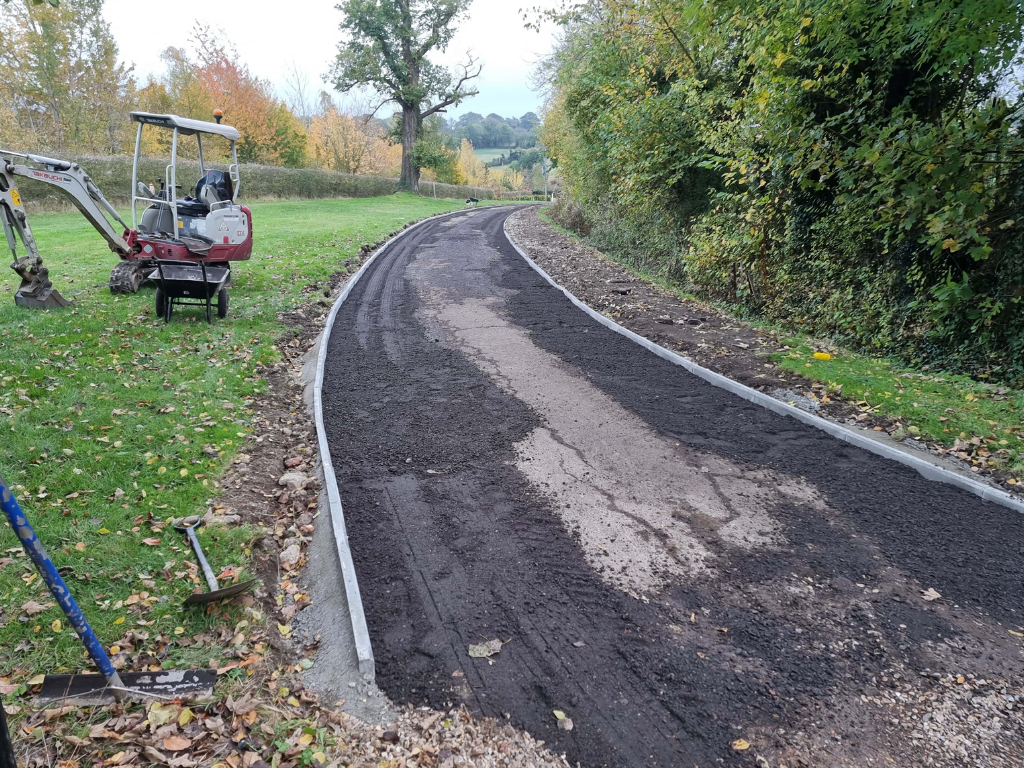Tarmac vs. Asphalt: Which Is Better for New Build Roads?
Introduction: When constructing new roads for your new build project, one of the primary decisions you’ll face is choosing the right surfacing material. Two commonly used options are tarmac and asphalt. While these terms are often used interchangeably, they refer to slightly different materials with distinct characteristics. In this blog post by Worlingworth Driveway Solutions, we will explore the differences between tarmac and asphalt and help you decide which is better for your newly built roads.
Tarmac: The Basics
Tarmac, or tarmacadam, is a bituminous material primarily composed of crushed aggregates (gravel, sand, or crushed stone) and bitumen (a petroleum-based binding agent). Tarmac is often a generic term for road surfacing in the UK.
Asphalt: The Basics
Conversely, asphalt refers to a specific mixture of aggregates (usually crushed stone, sand, and gravel) and bitumen. It is commonly used in road construction throughout the United States and other parts of the world. Asphalt is known for its flexibility, durability, and ease of maintenance.
Key Differences
- Composition:
- Tarmac contains a higher percentage of sand and less fine aggregate, resulting in a coarser texture.
- Asphalt has a higher proportion of fine aggregates, making it smoother and more suitable for high-traffic areas.
- Durability:
- Asphalt is known for its durability and ability to withstand heavy loads, making it an excellent choice for high-traffic roads and highways.
- Tarmac is generally less durable and may require more frequent maintenance in areas with heavy traffic.
- Weather Resistance:
- Asphalt is more resistant to temperature fluctuations, which makes it less prone to cracking and damage from freeze-thaw cycles.
- Tarmac may be susceptible to cracking and deterioration in harsh weather conditions.
- Maintenance:
- Asphalt is easier to maintain and repair. It can be resurfaced or patched relatively easily.
- Tarmac may require more frequent maintenance and may be more challenging to repair.
Choosing the Right Option
The choice between tarmac and asphalt for your newly built roads depends on several factors:
- Traffic Load: Consider the expected traffic load on the road. For high-traffic areas, asphalt is the preferred choice due to its durability.
- Climate: If your new build project is in an area with extreme weather conditions, asphalt’s resistance to temperature fluctuations may be advantageous.
- Budget: Tarmac is generally more cost-effective than asphalt, which may make it a better choice for projects with budget constraints.
- Aesthetics: Consider the desired aesthetics of the road. Tarmac may have a coarser texture, while asphalt provides a smoother, more finished appearance.
- Maintenance Plans: Determine your maintenance plan and budget. If you have the resources for ongoing maintenance, tarmac may be a suitable choice.
Conclusion: Both tarmac and asphalt have their merits, and the choice between the two depends on the specific requirements of your new build project. For durability and heavy traffic, asphalt is often the preferred option. However, if cost-effectiveness is a priority and maintenance is manageable, tarmac can be a suitable choice.
Call us on: 01728 448 691
Click here to find out more about Worlingworth Driveway Solutions
Click here to complete our contact form and see how we can help with your driveway needs.

